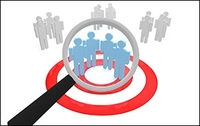 Martini Media on
Monday issued the inaugural edition of “The Martini Report,” the first edition of which does a deep dive on the “affluent audience online.” The research was released in
conjunction with media research firm Ipsos MediaCT.
Martini Media on
Monday issued the inaugural edition of “The Martini Report,” the first edition of which does a deep dive on the “affluent audience online.” The research was released in
conjunction with media research firm Ipsos MediaCT.
The report breaks down the “elite” into four categories: the hyper affluent (household income of at least $250,000), the mass
affluent ($100,000 - $249,999), the emerging affluent (aged 18-39 with $75,000 - $99,999 household income) and the aspiring affluent (ages 40+ with $75,000 - $99,999 household income).
The
hyper affluent represent 3% of the U.S. population, per the report, and have a median age of 48. The mass affluent represent nearly 25% of the U.S. adult population and have a median age of 45.
Martini calls the mass affluent “a crucial target for mainstream and luxury marketers alike.” Emerging affluents represent about 6% of the U.S. population, while the aspiring represent
8%.
advertisement
advertisement
The study was conducted online by Ipsos in June 2014, per a release. There were 870 adult respondents with a household income of $75,000+, and the company says the data was weighted to
reflect U.S. Census figures.
Over 40% of respondents said they “pay more attention to online ads that appear on sites with a good reputation.” reinforcing the idea that the future of programmatic may be private.
The ads may not need to appear alongside
reputable content to draw attention. However; if the ad itself is relevant content, the majority of the audience -- the younger audience, at least -- will pay attention. Martini singles out the
“emerging affluents” as most open to native advertising, with two-thirds reporting that they don’t care whether an article was written by a publisher or an advertising if the content
is relevant to them.
The company plans to release “The Martini Report” quarterly. The first edition features auto intenders -- noting that digital ads and the Internet are growing
in importance as it relates to influencing automobile purchases -- and Martini writes in a release that “future volumes will explore travel, financial services, retail and luxury
goods.”
"Audience" image via Shutterstock.